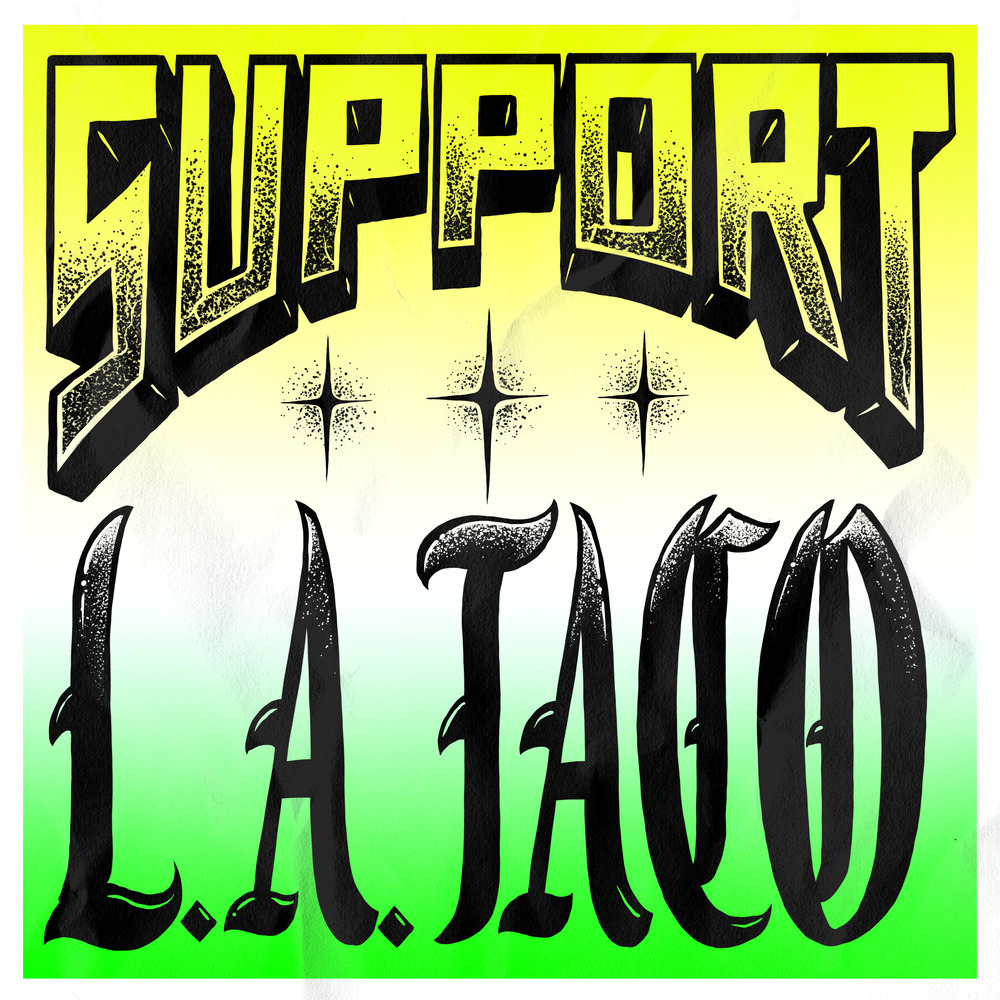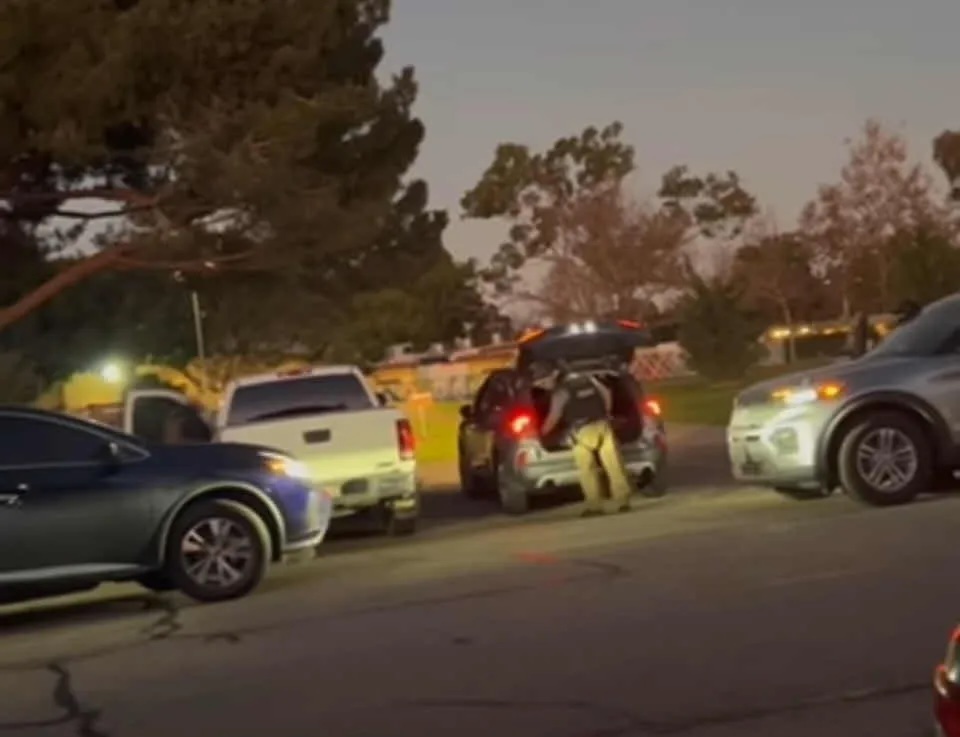Since Nipsey Hussle was tragically gunned down in front of his clothing store on Slauson Ave and Crenshaw Blvd three years ago, at least four well-known rappers have been killed in the Los Angeles area, making the region one of the most deadly for rap artists, according to an analysis of data compiled by L.A. TACO.
Less than a year after fans lost Hussle, Pop Smoke, the 20-year-old Brooklyn rapper who emerged from the New York City “drill” scene as one of the most promising east coast talents in years, was allegedly shot and killed by a 15-year-old over a Rolex watch that was ultimately sold for just $2,000.
Then late last year, one month after paying tribute to his friend Young Dolph, rapper Slim 400 was shot to death in Inglewood. Surveillance video footage shows an assailant ambush the rapper while he sits in a vehicle.
Less than two weeks later, Drakeo The Ruler, the South L.A. underdog who spent three years in an L.A. County jail cell before famously beating a possible life sentence, was jumped and stabbed to death shortly before taking the stage at an L.A. music festival. The back-to-back killings, long-standing beef between YG’s camp and Drakeo’s Stinc Mob as well as a searing eye-witness testimony from LA Magazine reporter Jeff Weis, fueled speculation that the murders were connected.
Four days after Drakeo was killed, Early Swavey, the “Bompton” protege of the late ASAP Yams, tweeted about the murder. “I'm mad niggas kilt drakeo (sic) now it ain’t nothing funny to watch Ona gram (laughing emoji).” Ironically it was his final post on the social media platform. Three weeks later, 26-year-old Swavey was fatally shot near the University of Southern California (USC) after reportedly opening fire on five people at a party, sending them to the hospital, according to police and the medical examiner.
As of earlier this year, no suspects have been identified or arrested in the killings of Swavey, Drakeo, or Slim 400, according to the LAPD. The suspects accused of killing Nipsey Hussle and Pop Smoke have all pleaded not guilty and are awaiting trial.
Within a month, the city lost three promising young artists. The recent homicides have made Los Angeles one of the deadliest cities for rappers while illuminating a perplexing phenomenon in rap music: most rappers get killed in their own city. Out of the four rappers killed in Los Angeles since Nipsey Hussle was murdered, all were from the Los Angeles area with the exception of Pop Smoke.
According to data compiled by L.A. TACO for the first time, the trend of rappers being killed in the cities that they represent tracks nationally. An L.A. TACO analysis found that out of more than 90 deaths, at least three-fourths of rappers killed since 1987, died in the cities where they grew to be stars.
At least eight rappers have been killed in Los Angeles since the mid-1980s and when you include the cities of Compton and Inglewood, that total jumps up to at least 11. More than a third of those deaths occurred within the last three years.
‘Hypnotized with Hatred’
Why are so many rappers killed in the cities that birth their careers? As the old school adage goes, "no prophet is accepted in his hometown."
In the case of Nipsey Hussle, Eric Holder, the man who killed Hussle and wounded two others, was an acquaintance and fellow member of the Rollin’ ’60s, the Crenshaw-area gang that Hussle was affiliated with. Both Holder and Hussle rapped, although Hussle was the only one ever to win a Grammy, much less find success in the music industry.
Minutes before Hussle was killed in the parking lot of the strip mall that he co-owned, he and Holder had a conversation according to witnesses, during which Hussle warned Holder that he was gaining a reputation for being a “snitch”.
Following the encounter, which appeared to be peaceful by all accounts, Holder returned to a friend’s car. After taking a couple of bites of some chili cheese fries, Holder retrieved a pistol and loaded it with ammunition. Moments later, when he faced Hussle again for a final time he reportedly said, “you’re through,” before firing at him at least 10 times with a pistol in one hand and a revolver in the other, before fleeing. Holder was arrested days later and has pleaded not guilty to murder charges.
The death of Nipsey Hussle rocked the city and came at a time when Hussle was working diligently to regain ownership of the community that he grew up in, or “buy back the block,” as he described it. Following his death, thousands lined the streets of Crenshaw in honor of the late rapper. Nipsey loved Los Angeles and L.A. loved him back. So why would someone like Holder—an acquaintance who repped the same gang—interfere with his mission and take his life?
Lil Boosie, a Louisiana-born platinum-selling rapper who ran into trouble, got acquitted, and has since fled his hometown, first brought attention to the frequency of rappers being killed in their own city, during a famous 2016 DJ Vlad interview that recirculates like clockwork every time another rapper is killed.
During the interview, Boosie discusses why he left Baton Rouge, Louisiana for Atlanta, Georgia when he began making money. “I had haters out there and it’s always like that, wherever you’re from you will get hated the most. Most rappers die in their own city, it’s a fact,” Boosie said six years ago. “I advise everybody once they get money, get out they city (sic), because that’s when the hatred gun’ come.”
For young artists like Earl Swavey, Slim 400, and Drakeo, they arguably never saw their careers get to the point where they had a chance to make that decision.
When Swavey came home in February of last year after serving a multi-year bid that put his career on hold, he had just lost his best friend, Nebula. Within a year, Swavey suffered the same fate as his childhood friend, just one month after turning 26.
He's the third family member to die since losing his father at a young age. "Words cannot begin to describe the loss that our family has endured," a family member wrote on a GoFundMe page raising money for funeral expenses.
“It’s crazy getting used to it,” Joe Remedy, a former manager of Swavey’s told L.A. TACO during an interview.
Although Remedy only lived in L.A. for about five years and his career in the music industry was brief, he's already seen “a handful" of people that he’s crossed paths with die. “Even though I'm not working in the music industry anymore, I'm still getting updates and news from people in the ‘hood about people getting shot.”
“It’s always been a worry of mine working with Earl,” Remedy says. For example, he says he couldn’t just call a shared Uber or Lyft for Swavey for fear that he might end up in a rival neighborhood.
Swavey also had to be mindful of the cops. Remedy recalls an instance in which the rapper was "briefly detained" due to a gang injunction that barred him from hanging out with certain friends.
Swavey’s life was about more than the streets though. He enjoyed skateboarding and acting as well. Remedy remembers Swavey as “a character." "A talented young kid that was just brought up in bullshit.” Boosie and others believe envy is behind the killings. “It be the guys that once dapped you down when you had one song out. And they develop envy because they go home, they get out the car with their other patna, he listening to your music. They walk into the house, they girl listening to your music. They go downstairs, the kids doing the dance to your music. Now they are hypnotized with hatred.”
In January, Jim Jones, the Harlem rapper and Dipset affiliate, spoke to the Breakfast Club about the recent killings of rappers. “The violence that’s going on in hip hop is crazy. Like when we be coming up we were protected as artists…there’s no protection for artists anymore, we’re just straight targets. And I stand on what I said…being a rapper is the most dangerous job in the world.”
In 2020, Jones sparked a polarizing debate when he stated during an interview with Fat Joe, that “being a rapper is the most dangerous job in the world.” During the interview with the Breakfast Club Jones took it a step further. “Since I've said that comment, I would like someone to actually count the deaths of rappers.”
In total, we identified more than 90 prominent rappers who have been killed since the mid-1980s. The rappers listed in this dataset are only the most notable, however. This is by no means a complete database. There are no doubt many more independent and emerging artists that have been killed that don’t necessarily make mainstream headlines. We encourage readers to highlight those cases in the comments.
But based on the best data that we currently have available, we know that more than three-fourths of all rappers killed since the late-1980s died in the cities that they repped. Almost all of the killings involved young men who were shot to death. And many of the cases have gone unsolved.
New York ranks as the deadliest city for rappers, followed closely by Los Angeles, Chicago, New Orleans, and Atlanta.
The number of rap murders per year has increased in recent years. Just last month, Baby Chino, a Miami-based rapper, was fatally shot minutes after walking out of a South Florida jail. In the past six years, more rappers have been killed than in the previous decade and a half. The spike in recent rap murders in cities like Los Angeles, New York, and other major metropolitan areas, mirrors a significant increase in homicides amongst the general public since the pandemic.
The exact reason behind the increase in killings is unclear.







